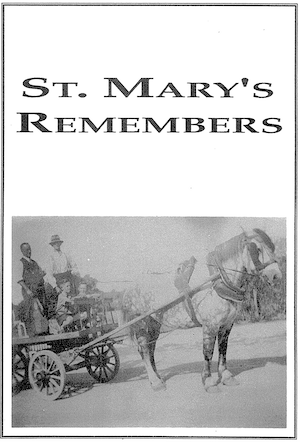The history of our great school is long and varied. Please read the information on the History page to see the pioneers of our school and their stories.
St. Mary’s Remembers 
- Click Here to Download your copy -
St. Mary’s Primary School commenced in1936, in the old church in Mill Street with 60 pupils. Sr M Annina was the first Principal and was assisted by Sr.M.Alban. Conditions were very primitive. A curtain was hung across the sanctuary and trestle tables were placed across the tops of the church seats for desks for older children. The Preps, Grade 1 and 2 sat on kneelers and used the seat as a desk. School equipment consisted of a couple of blackboards, some chalk, a few text books and the patience and ingenuity of the two nuns. After several weeks the school moved into the new church-school, which was still not finished.
It wasn’t until Easter tine that the school had ‘vacant possession’ of the building enabling the children to move in and begin their schooling in this new building… church/school. When the new church-school was blessed and opened in 1936, it was regarded as a unique concept. Combining church and school was a very new idea in those days. A considerable amount of thought and planning had been done, resulting in some very innovative ideas
Blackboards formed part of the partitions which folded away out of sight into recesses built into side walls. The partitions formed two school rooms and a small church section, which could be used without disturbing the school. A fireplace was built in each school room to provide warmth for pupils in the winter. A verandah on one side served as a shelter for both parishioners and school children. The desks were designed with a top which dropped down and a special compartment under the seat to accommodate school books. Each desk was provided with a kneeler and an interlocking base which held each group in straight lines. By folding back the partitions and dropping the desk tops the whole building became a church. The lovely Stations of the Cross were brought from the old church.
A polished wooden altar was donated by organist Miss Daisy Gill. The beautiful gold embossed tabernacle was donated by the J. Moloney family. The white wooden alter from the old church was kept for many years and used on Holy Thursdays as the Altar of the Repose.
When the school moved into its own building in 1962, the partitions were sealed into the recesses. The desks were disposed of, new church pews were installed and a confessional was built into part of the sacristy. It became a conventional church which remained unchanged until 1978. By this time repairs and renovations were badly needed in both presbytery and church. The presbytery was modernised and refurbished. The verandah was enclosed and became part of the interior. Coloured glass windows became a feature of the renovated church. When the original beams were used to construct the new altar, lectern, tabernacle support, president’s chair and baptismal font. The whole interior was carpeted and air-conditioning install. Parishioners were not used to such luxuries. The altar was repositioned in the centre with seating arranged in a semi-circle. Thus it remains today.
THE PRIMARY SCHOOL
St Mary’s Primary School commenced in 1936, in the old church in Mill Street with 60 pupils. Sr. M Annina was the first Principal and was assisted by Sr. M Alban.
Conditions were very primitive. A curtain was hung across the sanctuary and trestle tables were placed across the tops of the church seats for desks for the older children. The Preps, Grade 1 and 2 sat on the kneeler and used the seat as a desk. School equipment consisted of a couple of portable blackboards, some chalk, few text books and the patience and ingenuity of the two nuns.
After several weeks the school moved into the new church-school, which was still not finished. The following year reminiscences of Sr . Annina during the school’s 50 years celebrations tell the story well - “Somewhat organised chaos prevailed when we transferred to the new school. Folding doors had not yet been erected (leaving all grades in one room) and ceilings were unfinished; much of the furnishing off had yet to be completed. Much patience, perseverance and ingenuity was practised by teachers, pupils and workmen; and I think there were times when all wondered if it would ever work. That included the parish priest who was ever solicitous for the well-being of pupils, parents and sisters and constantly encouraged all.
About Easter time we had ‘vacant possession’ of the building and endeavoured to establish some routine; though the grounds were untouched and facilities at a minimum. The pupils were not the only ones in a learning situation. I still look back on those days of composite grades in a rural school as valuable and most rewarding.’
Mooroopna was very different in those days - population smaller, hence fewer Catholic families. Some came from Ardmona, driven daily by Tommy Tynon. Later, bicycles were provided for the Ardmona children (Transport board had not then provided buses). Gradually grounds were cleared and some semblance of football and basketball areas laid down. Numbers increased each year and graduates went to Shepparton for secondary schooling. We were still teaching in the church-school when I was transferred at the beginning of 1944.”
One of the most important events of the year in the early days was the visit of the school inspector, Fr Thomas, later Bishop of Geraldton. All pupils would live in fear and trepidation for weeks before, wondering what the exam questions would be. As inspector, Fr Thomas visited every catholic school in the Diocese for many years and became a respected and loved friend of many of the pupils.
As the town grew so did enrolments and in the early 1950’s Fr Downey built a small additional room, named St Anne’s adjacent to the church. This was a multi-purpose room, used for infant classes, meetings and music lessons.
By 1962 the church-school was inadequate for the numbers attending and Fr Scott built three classrooms, an office and a staff room. The church was no longer needed as a school. In 1970 Fr Scott added two more classrooms.
Fr Duffy built the open area complex and administration building in 1977. In 1978 one of the existing classrooms was converted to a library and was used as such until the new library was built by Fr Quinn in 1986.
School enrolments grew to a peak of 268 in 1978/79. St Mary’s was wholly staffed by Mercy nuns until 1964. Lay teachers were increasingly employed until 1984, when the first lay principal was appointed and the Mercy nuns ceased to be involved with the school. The end of an era!
The Open area was converted into an open space for Parish and school use. Assemblies and Parish functions were held in this building.
Due to the increasing number of enrolments St Mary’s has recently seen two additional permanent classrooms built as well as the use of two relocatable classrooms
Scottie One was refurnished and 3 addition classrooms were erected. Patricia McConvill [Principal] was in charge of the school and overseen the development of this new area…. Open classrooms for 2 classes. St.Anne’s was demolished along with the bike and bingo shed to allow for the extension.
Enrolments were growing at a rapid rate and the need for two relocatable classrooms was warrant. Continuing numbers meant that more classrooms were needed. For a period the St. Mary’s open area returned as classrooms to ‘house ‘ the children while the new Grade 5/6 area was being built. The completion of this building was in 2008 and the Open Area returned as a Bingo Parish and school centre.
In 2010 with the initiation of the Building Education Revolution grant after consultation between parish and school it was decided to build a new School Parish centre. The offer of this grant was too great to decline. Mr Anthony Butts [Principal] initiated and facilitated the erection of this beautiful facility. The ‘Marian Centre’. comprising 2 open learning/gathering spaces, with IT equipment, a full furnished kitchen, a meeting /viewing room and toilet facilities shared by both Parish and School.
Our history continues to evolve. We are ever grateful to so many parishioners and school personal who have endeavoured to dream the vision and see the results in what St. Mary’s is today.


